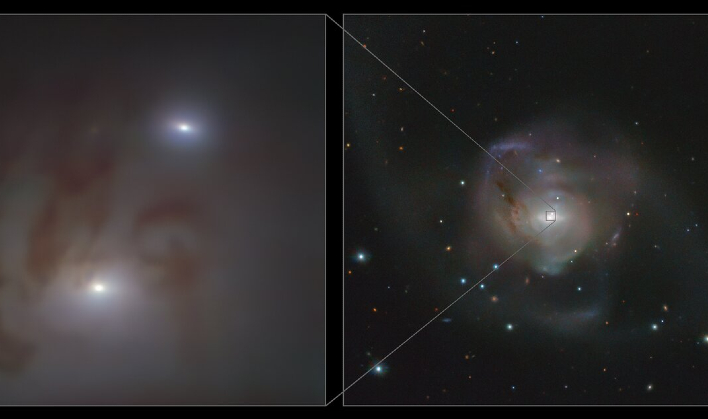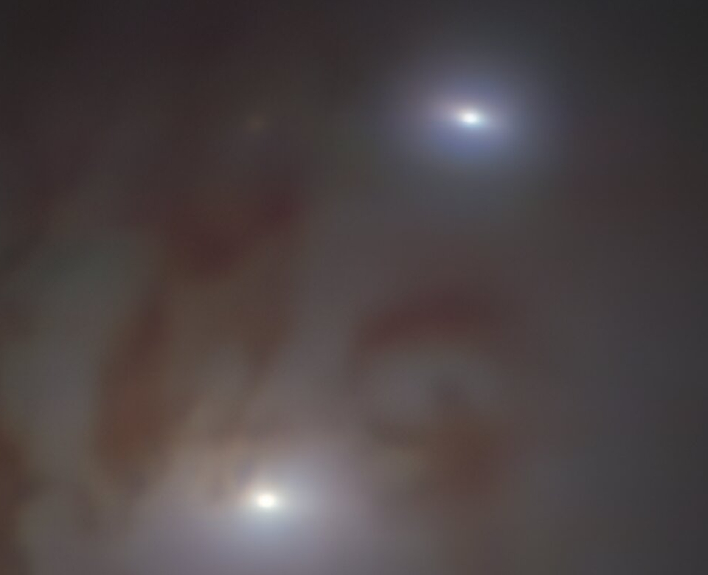These Supermassive Black Holes Are On Collision Course To Form A Monster That's The Closest To Earth Yet

In a galaxy far, far away astronomers spotted a pair of supermassive black holes about 89 million light years away from Earth. While that may sound like an extremely far distance, it is far closer than the previous record of 470 million light years, and by quite a large amount. The pair are also close neighbors to one another located in the galaxy NGC 7727 in the constellation Aquarius. The supermassive black holes are such close neighbors that broke that record as well—they're 'just' 1,600 light years apart.
Karina Voggel, an astronomer at the Strasbourg Observatory in France and lead author of the study published online today in Astronomy & Astrophysics stated, "It is the first time we find two supermassive black holes that are this close to each other, less than half the separation of the previous record holder." The distance indicates that the two should merge into one monster black hole in around 250 million years. It is believed that black holes merging together like this are what form the most massive of black holes in the universe.
Voggel and her team determined the masses of the two supermassive black holes by observing how each one's gravitational pull affects the motion of the stars around them. To give some type of reference to size of the larger of the two, it has a mass that is nearly 154 million times that of the Sun. The smaller of the two comes in at 6.3 million solar masses. So yeah, they're pretty big.

This was also the first time the mass of a pair of supermassive black holes were able to be measured in this way. The team was able to accomplish this due to their close proximity to Earth and the detailed observations obtained at the Paranal Observatory in Chile while using the Multi-Unit Spectroscopic Explorer (MUSE) on ESO's VLT. By measuring the masses with MUSE and incorporating additional data from the NASA/ESA Hubble Space Telescope, the team was able to acknowledge the two were in fact supermassive black holes.
The detection of other supermassive black holes that have yet to be discovered is expected to make a huge leap forward when ESO's Extremely Large Telescope (ELT) begins operation later this decade in Chile. Astronomers believe the most recent detection of the pair of black holes is just the beginning. They are confident that the HARMONI instrument on the ELT will be integral in understanding these objects in space and uncovering more in the future.
The research of this project is included in a paper titled "First Direct Dynamical Detection of a Dual Super-Massive Black Hole System at sub-kpc Separation" and will appear in Astronomy & Astrophysics.

